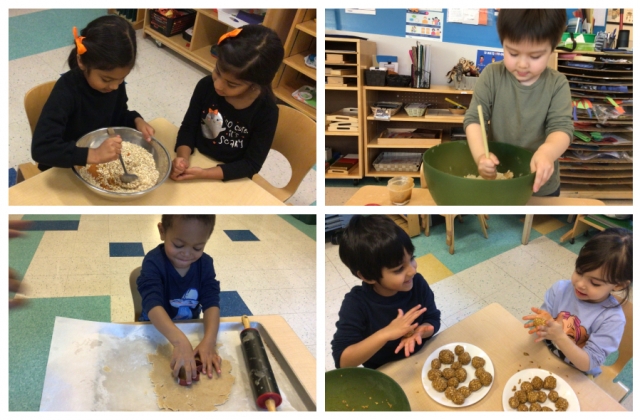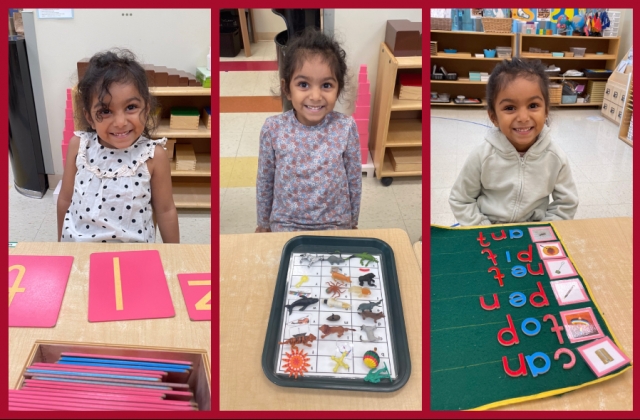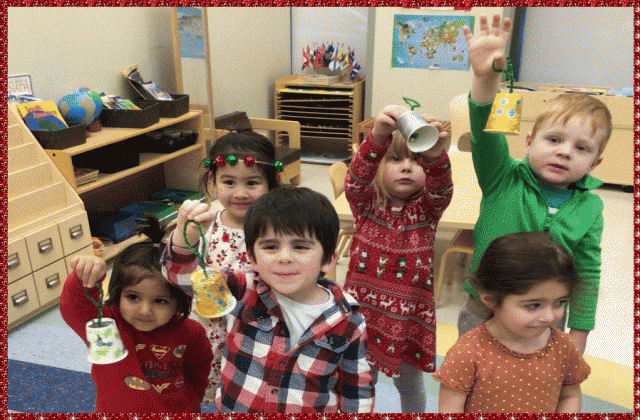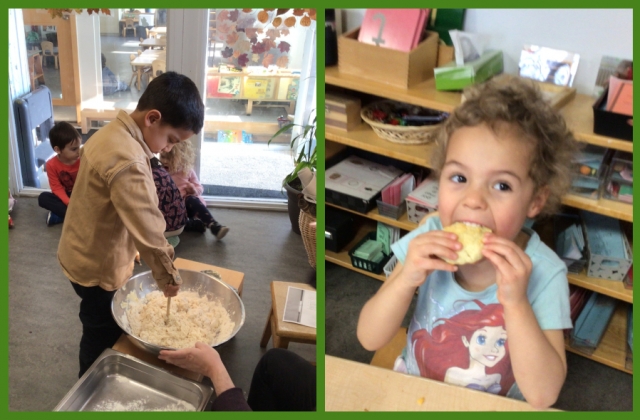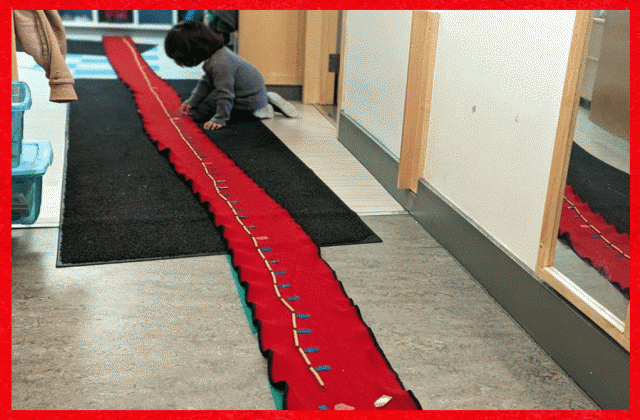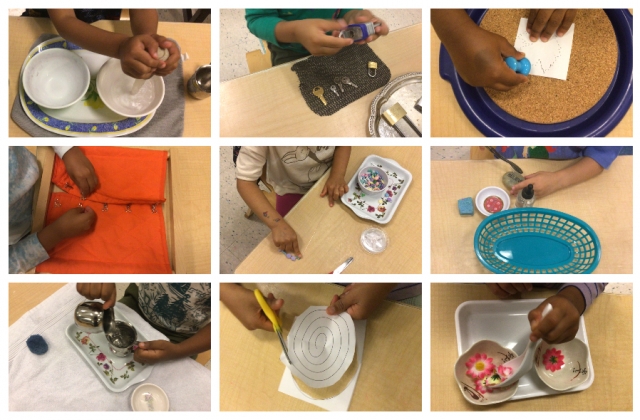Baking
The children assist teachers in adding, mixing, and measuring ingredients for baked goods they then get to enjoy for their afternoon snack. We discuss scientific aspects such as the heating process, the different chemical reactions, and why it’s important to measure correctly. (Please click for more photos and information.)
View
